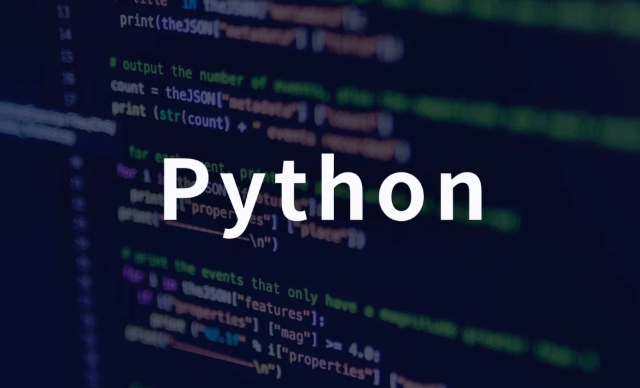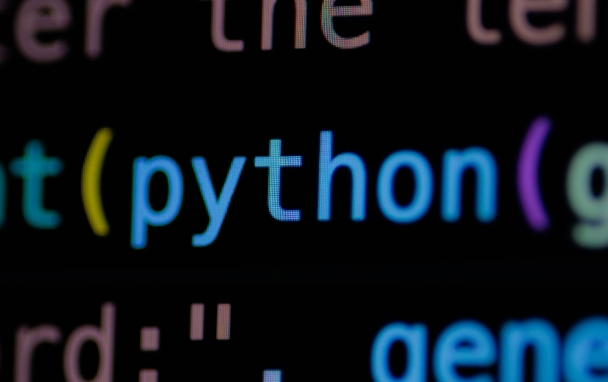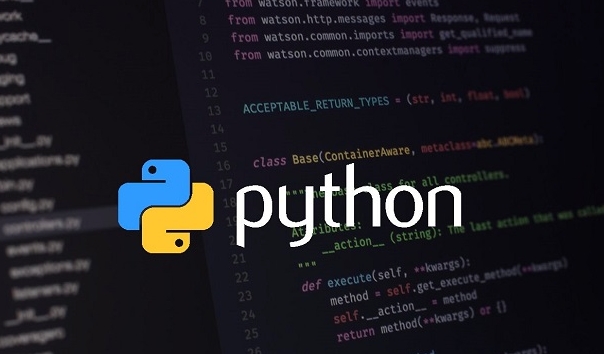 Backend Development
Backend Development
 Python Tutorial
Python Tutorial
 Differentiating Class, Static, and Instance Methods in Python
Differentiating Class, Static, and Instance Methods in Python
Differentiating Class, Static, and Instance Methods in Python
Jul 05, 2025 am 02:57 AMIn Python, methods in classes are divided into three types: instance methods, class methods and static methods. 1. The instance method accepts self parameters by default, which are used to access or modify instance properties; 2. The class method uses the @classmethod decorator and accepts the cls parameter to operate class-level data; 3. The static method uses the @staticmethod decorator, which does not rely on self or cls, and is suitable for tool functions that are not related to the class or instance. The choice of these three methods depends on the required scope and access permissions.

In Python, methods within a class can be categorized into three main types: instance methods , class methods , and static methods . Understanding the differences between them is cruel for writing clean, maintainedable object-oriented code.

Instance Methods – The Default and Most Common Type
Instance methods are what you're likely most familiar with if you've worked with classes in Python. They take self as their first parameter, which gives them access to instance-specific data (attributes) and allows them to modify an object's state.

They're typically used when you need to work with or change the data unique to each instance of a class.
For example:

class Dog:
def __init__(self, name):
self.name = name
def bark(self):
print(f"{self.name} says woof!") Here, bark() is an instance method. When you create a Dog object like my_dog = Dog("Buddy") , calling my_dog.bark() works because self automatically refers to that specific instance.
Key points about instance methods:
- Always accept
selfas the first argument. - Can access and modify instance attributes.
- Cannot be called directly from the class unless an instance is provided.
Class Methods – Working at the Class Level
Class methods are defined using the @classmethod decorator and take cls as their first parameter. This gives them access to the class itself, but not to instance-specific data. They're useful when you want to manipulate class-level data or provide alternate constructors.
A common use case is creating factory methods that return instances of the class based on different input formats.
Example:
class Dog:
species = "Canis lupus"
@classmethod
def set_species(cls, new_species):
cls.species = new_species Now if you call Dog.set_species("Canis familiaris") , it changes the species attribute for all future instances (unless overridden per instance).
Key traits:
- Decorated with
@classmethod. - Take
clsas the first parameter. - Modify class state that applies across all instances.
- Often used for alternative constructors (eg,
from_json(),from_string()).
Static Methods – Utility Functions Without Access to Self or Cls
Static methods are utility functions grouped under a class because they're logically related, but they don't need access to either the instance ( self ) or the class ( cls ). These are decorated with @staticmethod .
They behave like regular functions but live inside a class namespace. If your method doesn't need to touch instance or class variables, it should probably be static.
Example:
class MathUtils:
@staticmethod
def add_numbers(x, y):
return xy You can call this without creating an instance: MathUtils.add_numbers(5, 3) .
Important notes:
- No
selforclsneeded. - Used for helper or utility functions.
- Keeps related functionality organized within a class.
So depending on whether your method needs to interact with an instance, the class, or neither, you'll choose one of these three types. It's mostly about scope and access.
Basically that's it.
The above is the detailed content of Differentiating Class, Static, and Instance Methods in Python. For more information, please follow other related articles on the PHP Chinese website!

Hot AI Tools

Undress AI Tool
Undress images for free

Undresser.AI Undress
AI-powered app for creating realistic nude photos

AI Clothes Remover
Online AI tool for removing clothes from photos.

Clothoff.io
AI clothes remover

Video Face Swap
Swap faces in any video effortlessly with our completely free AI face swap tool!

Hot Article

Hot Tools

Notepad++7.3.1
Easy-to-use and free code editor

SublimeText3 Chinese version
Chinese version, very easy to use

Zend Studio 13.0.1
Powerful PHP integrated development environment

Dreamweaver CS6
Visual web development tools

SublimeText3 Mac version
God-level code editing software (SublimeText3)
 How to handle API authentication in Python
Jul 13, 2025 am 02:22 AM
How to handle API authentication in Python
Jul 13, 2025 am 02:22 AM
The key to dealing with API authentication is to understand and use the authentication method correctly. 1. APIKey is the simplest authentication method, usually placed in the request header or URL parameters; 2. BasicAuth uses username and password for Base64 encoding transmission, which is suitable for internal systems; 3. OAuth2 needs to obtain the token first through client_id and client_secret, and then bring the BearerToken in the request header; 4. In order to deal with the token expiration, the token management class can be encapsulated and automatically refreshed the token; in short, selecting the appropriate method according to the document and safely storing the key information is the key.
 Explain Python assertions.
Jul 07, 2025 am 12:14 AM
Explain Python assertions.
Jul 07, 2025 am 12:14 AM
Assert is an assertion tool used in Python for debugging, and throws an AssertionError when the condition is not met. Its syntax is assert condition plus optional error information, which is suitable for internal logic verification such as parameter checking, status confirmation, etc., but cannot be used for security or user input checking, and should be used in conjunction with clear prompt information. It is only available for auxiliary debugging in the development stage rather than substituting exception handling.
 How to iterate over two lists at once Python
Jul 09, 2025 am 01:13 AM
How to iterate over two lists at once Python
Jul 09, 2025 am 01:13 AM
A common method to traverse two lists simultaneously in Python is to use the zip() function, which will pair multiple lists in order and be the shortest; if the list length is inconsistent, you can use itertools.zip_longest() to be the longest and fill in the missing values; combined with enumerate(), you can get the index at the same time. 1.zip() is concise and practical, suitable for paired data iteration; 2.zip_longest() can fill in the default value when dealing with inconsistent lengths; 3.enumerate(zip()) can obtain indexes during traversal, meeting the needs of a variety of complex scenarios.
 What are Python type hints?
Jul 07, 2025 am 02:55 AM
What are Python type hints?
Jul 07, 2025 am 02:55 AM
TypehintsinPythonsolvetheproblemofambiguityandpotentialbugsindynamicallytypedcodebyallowingdeveloperstospecifyexpectedtypes.Theyenhancereadability,enableearlybugdetection,andimprovetoolingsupport.Typehintsareaddedusingacolon(:)forvariablesandparamete
 What are python iterators?
Jul 08, 2025 am 02:56 AM
What are python iterators?
Jul 08, 2025 am 02:56 AM
InPython,iteratorsareobjectsthatallowloopingthroughcollectionsbyimplementing__iter__()and__next__().1)Iteratorsworkviatheiteratorprotocol,using__iter__()toreturntheiteratorand__next__()toretrievethenextitemuntilStopIterationisraised.2)Aniterable(like
 Python FastAPI tutorial
Jul 12, 2025 am 02:42 AM
Python FastAPI tutorial
Jul 12, 2025 am 02:42 AM
To create modern and efficient APIs using Python, FastAPI is recommended; it is based on standard Python type prompts and can automatically generate documents, with excellent performance. After installing FastAPI and ASGI server uvicorn, you can write interface code. By defining routes, writing processing functions, and returning data, APIs can be quickly built. FastAPI supports a variety of HTTP methods and provides automatically generated SwaggerUI and ReDoc documentation systems. URL parameters can be captured through path definition, while query parameters can be implemented by setting default values ??for function parameters. The rational use of Pydantic models can help improve development efficiency and accuracy.
 How to test an API with Python
Jul 12, 2025 am 02:47 AM
How to test an API with Python
Jul 12, 2025 am 02:47 AM
To test the API, you need to use Python's Requests library. The steps are to install the library, send requests, verify responses, set timeouts and retry. First, install the library through pipinstallrequests; then use requests.get() or requests.post() and other methods to send GET or POST requests; then check response.status_code and response.json() to ensure that the return result is in compliance with expectations; finally, add timeout parameters to set the timeout time, and combine the retrying library to achieve automatic retry to enhance stability.
 Python variable scope in functions
Jul 12, 2025 am 02:49 AM
Python variable scope in functions
Jul 12, 2025 am 02:49 AM
In Python, variables defined inside a function are local variables and are only valid within the function; externally defined are global variables that can be read anywhere. 1. Local variables are destroyed as the function is executed; 2. The function can access global variables but cannot be modified directly, so the global keyword is required; 3. If you want to modify outer function variables in nested functions, you need to use the nonlocal keyword; 4. Variables with the same name do not affect each other in different scopes; 5. Global must be declared when modifying global variables, otherwise UnboundLocalError error will be raised. Understanding these rules helps avoid bugs and write more reliable functions.





